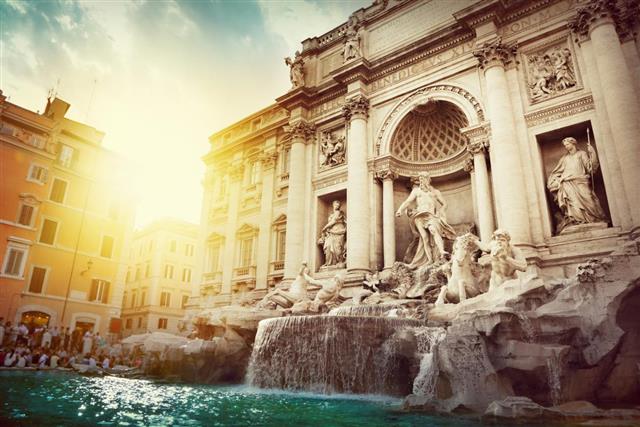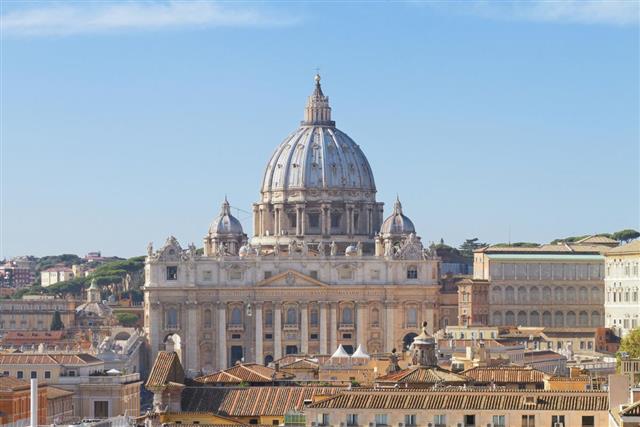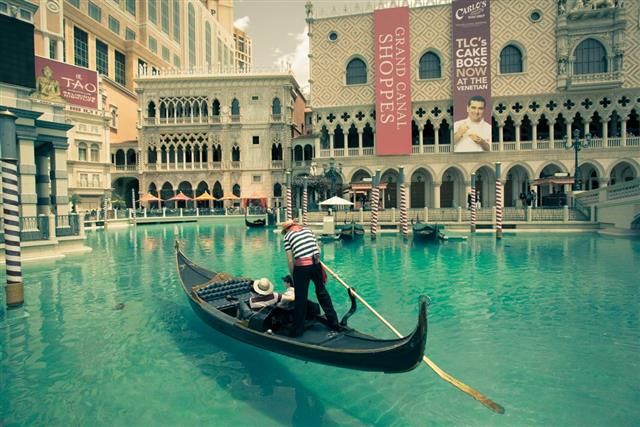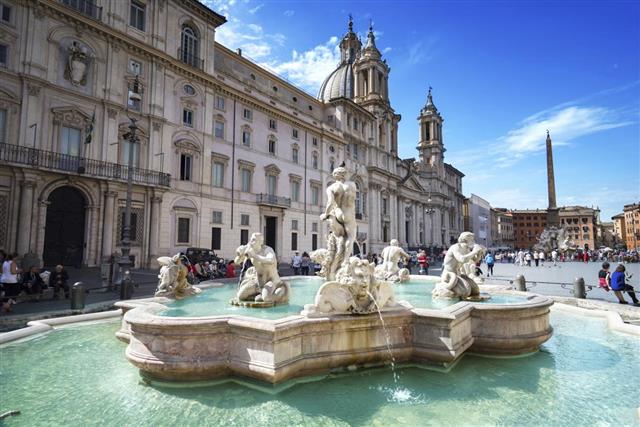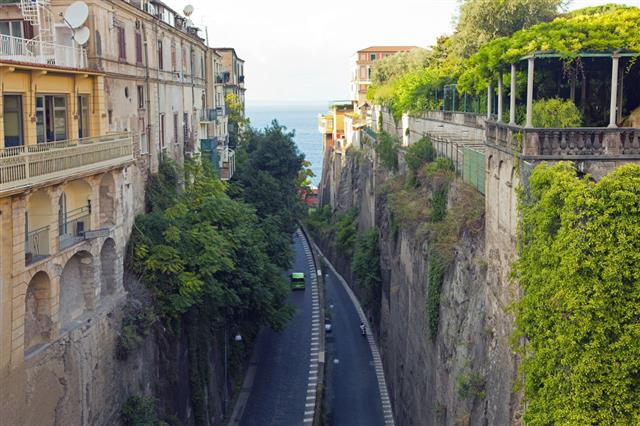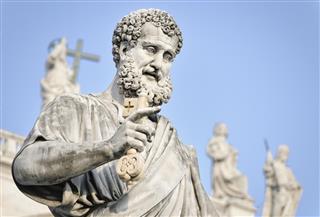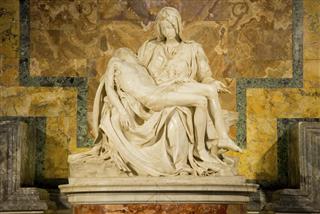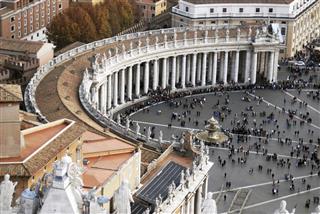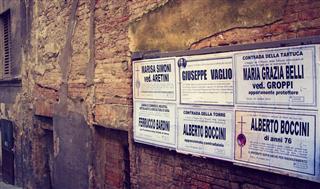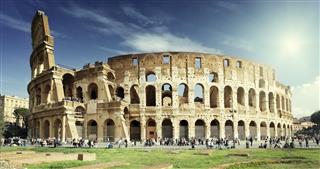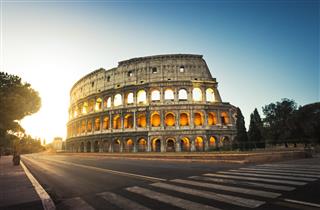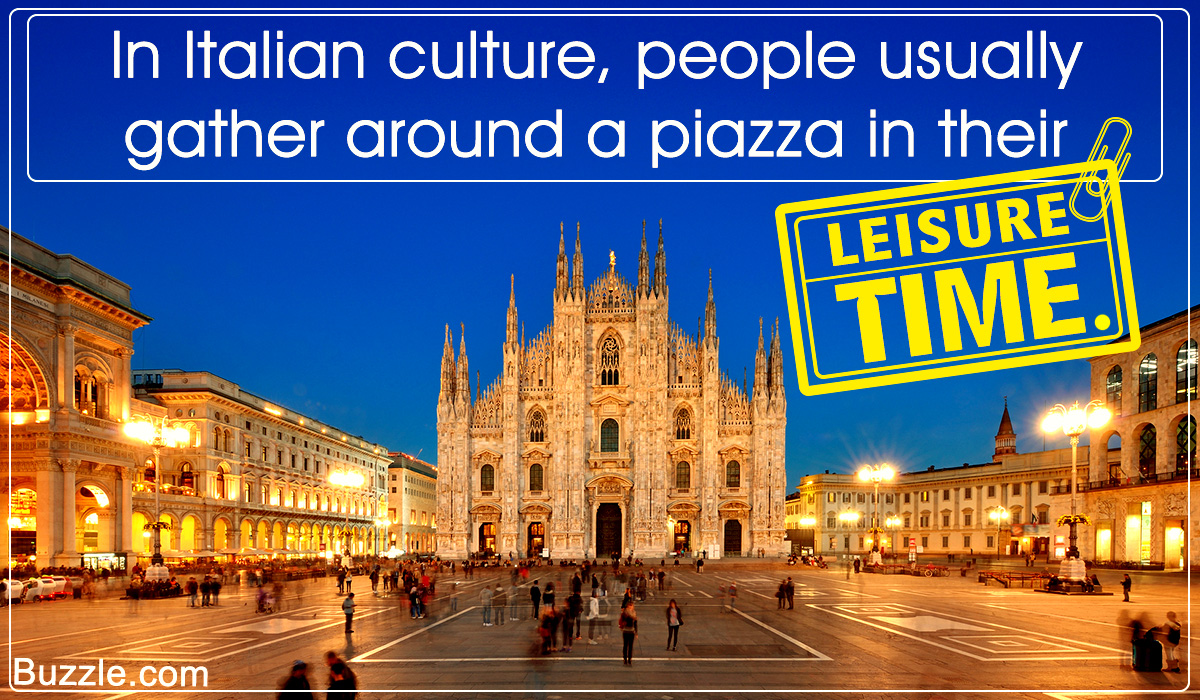
Italy is very well-known for its beautiful monuments, rich food culture, and lavish lifestyle. Historyplex explores the country’s most interesting customs and traditions.
I love places that have an incredible history.
I love the Italian way of life.
I love the food.
I love the people.
I love the attitudes of Italians.
― Elton John
Italy is a country with the most delicious food and wine, lush greens festooned with vineyards, enthusiastic gondoliers on the canals of Venice, big families gathering for lavish meals, and a country with the world’s most spectacular monuments. It is a large country that has an incredibly long and deep-rooted history, which has given rise to the diversity in the culture of the country.
The culture, customs, and traditions vary from region to region. For example, the traditions of Italians from Sicily, Veneto, and Campania vary greatly from each other. Let us, in this Historyplex article, celebrate the Italian culture, right from its art and architecture to being today’s fashion capital.
Architecture
The Colosseum
The Leaning Tower of Pisa
Italy has given birth to a number of architectural styles, including classical Roman, Renaissance, Baroque, and Neoclassical styles. The architectural style of Italy began with ancient styles of the Etruscans and Greeks, which further progressed into classical Roman during the Renaissance, and then evolved into the Baroque era.
The architecture of ancient Rome adopted the elements of Greek architecture around the 2nd century BCE, thereby giving birth to an altogether different architectural style. The use of vaults and arches in their architecture, combined with their sound knowledge of building materials, enabled the Romans to create some of the greatest masterpieces of the Italian architecture. The Colosseum, along with the aqueducts of Rome, the Baths of Diocletian, and the Baths of Caracalla are excellent examples of this.
The Milan Cathedral
St. Peter’s Basilica
The concept of basilica was invented in Italy during the Early Christian age, with the Old St. Peter’s Church being the first notable Christian basilica. Byzantine architecture widely spread in Italy with the fall of the Western Roman Empire in 476 CE. The Byzantines kept the Roman architecture style intact with a slight Eastern twist. Their monuments had a slightly flatter dome, and used more gilded mosaics and icons instead of statues.
The Saint Mark’s Basilica in Venice is a spectacular example of the Byzantine architecture in Italy. The Romanesque movement that occurred from 800 CE to the 1100 CE, produced Italy’s best masterpieces. The Leaning Tower of Pisa and the Basilica of Sant’Ambrogio were built during this period.
The Renaissance in the 15th century is considered the golden period of Italian architecture. Architects like Filippo Brunelleschi, Leon Battista Alberti, Donato Bramante, and Andrea Palladio made great contributions to the Italian architecture. St. Peter’s Basilica is considered to be the greatest achievement of this period.
Other significant monuments built during this period include the Florence Cathedral, Basilica of San Lorenzo, Basilica of Sant’Andrea, Medici Riccardi Palace, and Villa Rotonda.
Italy proudly boasts of 95,000 monumental churches, 40,000 forts and castles, 30,000 historical residences with 4,000 gardens, 36,000 archives and libraries, 20,000 historical cities and towns, 5,600 museums and archaeological sites, and 1,500 convents.
Art
Jesus Christ Fresco in Rome
Adoration of the Shepherds
Italy is a sheer paradise for art lovers. Italian art has influenced several major artistic movements and has given birth to the most notable painters and sculptors. Italy is home to some of the most famous art galleries, museums, and exhibitions. Major art capitals in the country include Rome, Florence, Venice, Milan, Naples, and Turin. Art in Italy was mainly transformed during Roman times.
The Roman art brought three major features in Italian art: the art of portraits, landscape painting, and history presentation. After the fall of the Roman Empire, the Roman art tradition continued to exist. The Italian Renaissance is said to be the golden period of art in Italy, which spanned from the 14th to the 17th century. Painters like Paolo Uccello, Fra Angelico, Masaccio, Piero della Francesca, Andrea Mantegna, Filippo Lippi, Giorgione, Tintoretto, Sandro Botticelli, Leonardo da Vinci, Michelangelo Buonarroti, Raphael, Giovanni Bellini, and Titian produced some of their most notable work during this period.
Michelangelo’s David
The Fountain of Neptune
Sculptors like Lorenzo Ghiberti, Luca Della Robbia, Donatello, Filippo Brunelleschi, and Andrea del Verrocchio also gave Italy some great masterpieces. The cities that are most renowned for their art include Rome, Florence, Assisi, Venice, Siena, Pisa, and Naples. Uffizi Gallery in Florence, the Capitoline Museums in Rome, the Brera Art Gallery in Milan, and the archaeological sites such as Pompei and Herculaneum, are nothing but a treat for art lovers.
Italy has a rich combination of masterpieces to offer from different areas, from the Ancient Greeks and Romans to the present day. Florence, Venice, and Rome are home to innumerable art galleries, museums, and exhibitions. The museums in Italy attract a lot of tourists. They showcase some of the greatest works of art and culture. The Sforza castle in Milan and the Uffizi Gallery in Florence are two of the most famous museums in Italy.
Music and Dance
A Street Band Performing Jazz in Rome
A Saxophone Player during the Venice Carnival, Italy
Music has played a significant role in the culture of Italy. Piano and violin were invented in Italy, and so were the classical music forms such as symphony, concerto, and sonata. Music in Italy is heavily influenced by its history. The traditional music in Italy differs from region to region. Italy’s folk music styles include monophonic, polyphonic, and responsorial songs.
The folk songs include ballads, lyrical songs, and seasonal songs depending on upcoming festivals, children’s songs, as well as lullabies. Opera, one of the most renowned music forms, was also invented in Italy in the early 17th century. Rossini, Bellini, Donizetti, Verdi, and Puccini are some of the most famous operas of Italy, and are still performed all over the world. The La Scala opera house in Milan is one of the best opera houses in the world.
Jazz is another music genre that has a strong foothold in Italy―the most famous centers being Milan, Rome, and Sicily. Music in the northern half of the country has Celtic influences, while that in the southern half has Greek and Arabic influences. Sardinia is very well-known for its distinctive style of chanting done through a triple clarinet instrument, which is played using circular breathing.
Traditional Italian Dancers Performing Tarantella
Folk Dancers During a Street Party in Bologna, Italy
Famous folk dances performed in northern Italy include monferrina, girometta, giga, ruggero, galletta, veneziana, and bergamasca. The ones performed in central Italy are saltarello romagna, saltarello ciociara, lu sardarellu, laccio d’amore, trescone, and tresconeto, whereas the ones performed in Southern Italy are tarantella napoletana, tarantella calabrese, ndrezzata, pizzica, la pecorara, and la vala.
Various weapon dances like Spandonari di San Giorgio, lachera, and Spandonari di San Vicenzo are also performed in Italy. The couple dances in Italy are collectively referred to as saltarello. The flag dances and the monferrina of Italy are also very popular.
Clothing
Italians are very well-known for their dressing style. The dress code in Italy is usually formal and elegant, unlike in North European and North American countries. Italians are known to dress appropriately, according to the occasion. Bathing costumes and revealing tops and shirts are considered unfit for shops, streets, or restaurants, and are usually limited to pools and beaches. Moreover, jeans is also considered inappropriate for churches or restaurants.
Women in Traditional Clothing
Man in Traditional Clothing
The long history of Italy and the country’s various traditions have produced cultural and folk diversity. Therefore, the traditional Italian clothing differs from region to region. The clothing in Northern Italy is mainly inspired from the peasant dresses in the Middle Ages. In the Veneto region, the clothing for women includes embroidered skirts and bodices over lightweight blouses. They are worn with elaborate hats, which have flowers and fruits on them.
They usually wear white shirts with longitudinal wrinkles, and tight bodices that are short, sleeveless, and buttoned. An apron is tied in the front, and handkerchiefs or hats are used as headgear. Footwear is generally made out of wool, and recalled hooves or scarpete. Men’s clothes are simpler as compared to the women, and have embroider and metal buttons and pins on them. Their clothing is characterized by a white shirt, vest open or buttoned, knee breeches, and sometimes a hat.
Most traditional clothing is made from a waterproof type of wool called orbace. South Italy is represented by costumes that are filled with vibrant colors, and have aprons and light shawls.
Fashion
Italian fashion is mainly dominated by Milan, Rome, and Florence, which are among the top 30 fashion capitals of the world. In 2009, Milan was declared as the world fashion capital surpassing New York, Paris, Rome and London. Many of the major Italian fashion brands, such as Valentino, Versace, Prada, Armani, Trussardi, Moschino, Etro, Zegna, and Dolce & Gabbana are currently located in the city.
Other major brands like Gucci, Roberto Cavalli, Patrizia Pepe, Enrico Coveri, and Emilio Pucci presently have their headquarters in Florence. Other major players such as Prada and Chanel have large offices and stores situated in Florence and its outskirts.
Cuisine
Spaghetti
Italian food has its roots in Etruscan, ancient Greek, and ancient Roman cuisines. It is popular all over the world, and has its influence on various cuisines. In Italy, wine, cheese, and pasta form an integral part of the meal. Pasta, is loved and preferred, in the various shapes and lengths that it is available in. This includes penne, spaghetti, linguine, fusilli, and lasagna.
Pasta
Lasagna
Fish, potatoes, sausages, rice, and pork form the main ingredients in the northern part of the country, whereas southern cooking is mainly dominated by tomatoes. Capers, olives, garlic, eggplant, and ricotta cheese are other main ingredients of southern cooking. The Central Italian cuisine uses ingredients like tomatoes, pecorino cheese, fish, and all kinds of meat. The meals usually consist two courses: a side dish and coffee.
Typically, fresh or dried fruit or a little cheese is served as dessert.
Religion
Roman Catholicism is the largest religion in Italy. Vatican City serves as the center of Roman Catholicism all over the world, and is the home of the Pope. The Roman Catholic Church plays a role in the nation’s political affairs due to the Holy See’s location in the Vatican City. Some of the religious Italian traditions, such as creating a nativity scene outside a church, have become worldwide traditions.
The regular religious practices include weekly church services, observance of religious holidays, and obeying the religious doctrine, as instructed by the Pope.
Italian celebrations too, place a lot of emphasis on the saints and Virgin Mary. Almost 98% of Italians are Roman Catholic. Minorities of Protestant, Waldensian, Eastern Orthodox, and other Christian churches also reside in Italy. The second largest religion followed in Italy is Islam, with 1.4% Muslim population. Italy’s population also includes 75,000 Hindus, 50,000 Buddhists, and 30,000 Jews.
Baptism and Weddings
Religion plays a very important role when a child is born into an Italian family. The baby is baptized in a traditional Roman Catholic ceremony, where the parents choose a godmother and godfather for the baby, who are obligated to raise the baby in case the birth parents fail to do so, due to some reason.
In a traditional Italian courtship, the groom needs the permission of the bride’s family before marrying her. Italians too, wear a diamond ring as a symbol of engagement and marriage. The wedding is usually held at a morning mass, which is followed by a day-long feast and a reception. The reception features a traditional Italian meal which includes various drinks, appetizers, three or four courses, side dishes, cheese and fruit, and a variety of desserts.
Interesting Wedding Traditions
» During the reception, in a tradition called la borsa, the bride carries a small satin bag, in which friends and family place cash, in exchange of a dance with her.
» The newlyweds’ first dance is tarantella, a traditional Italian dance. The guests at the wedding form a circle and dance around the couple. It is called the dance of a spider, and involves light movements with passionate hand gestures.
» The groom cuts his tie at the end of the wedding ceremony, which the groomsmen then sell off, usually to pay for the band.
» Another interesting and one of the oldest traditions is to gift candy-coated Jordan almonds wrapped in tulle to the guests, which represent the bittersweet nature of marriage.
» The bride usually wears a green dress on the night before her wedding, as this is supposed to bring the couple abundance and good luck.
Festivals
Italy is a land of festivals, and each festival has a deep-rooted tradition. It hosts various colorful religious rituals, historical pageants, medieval-style tournaments, film festivals, contemporary art events, bizarre traditional spectacles, and much more. Most festivals symbolize historical events, and involve processions of hundreds and thousands of people dressed up in costumes. Venice and Florence remain the topmost destinations, when it comes to attracting visitors during festivals.
The outstanding opening of the Venice Carnival, along with the two-week festival is something that is celebrated with great enthusiasm in Italy. The Festa della Madonna della Salute, also known as la Salute, is celebrated to pay respect to La Salute, a church, which is one of the city’s most popular landmark. The Scoppio del Carro, celebrated in Florence on the Easter Sunday morning, has been in existence for over 500 years now, and is an excellent combination of fireworks, bizarre spectacle, and a religious tradition.
Battle of Oranges in Italy
Participants in Masks during the Venice Carnival
The Festa della Madonna Bruna, celebrated in Matera, is another popular festival, and is an unusual combination of religion and destruction. The festival showcases the loudest and most brightest fireworks in Europe. Also notable are the various flower art festivals that are held in early summer, especially the Almond Blossom Festival at Agrigento in Sicily, where magnificent art works are created using only the flower petals and seeds.
Other popular festivals include Calcio Storico, Orange Battle at Carnevale di Ivrea, Palio, Game of the Bridge, Sagra di’ Pinolo, Festino di Santa Rosalia, Corsa Dei Seri, L’Ardia di San Constantino, Festival Del Maggio Musicale Fiorentino, and Fiesta di San Marco.
Family Life
Italians are very family-oriented. In the olden days, the families used to be large, where the couple often had more than six children. However, things have drastically changed in the last 30 years with the country’s transition from an agricultural system into an industrial system. The Italian families are relatively smaller in size, and are made up of only one or two children. People, nowadays, marry later and less frequently, and have fewer children.
Usually, families in the South will have more children than the ones in the North. However, even though the families are smaller now, the members spend a lot of time together, and make sure that they gather for at least one meal every day to talk about the day’s events. Also, the members share a very strong bond, even if they live far from their families, and always join their families on every small and big festival. Children in the families tend to stay with their families longer than those in the Western countries. And even after they are married, they often choose to live closer to the parents of one of the parties. Sometimes, they even choose to live in the same building or house. Older members in the family are highly respected. They usually have the most power, and often make all the decisions in the family.
Languages
Italian is the official language of Italy, and 93% of the Italian population are native Italian speakers. However, there are a number of dialects like Sardinian, Friulian, Neapolitan, Sicilian, Ligurian, Piedmontese, Venetian and Calabrian, spoken throughout the country. Natives also speak Bavarian, Catalan, Cimbrian, Corsican, Croatian, French, Greek, Slovenian, and Walser.
A minor population of the country also speaks German and Albanian. Additionally, Milanese is widely spoken in Milan. In all, there are 34 languages that are spoken in Italy.
Italian is a romance language, which means that, like Spanish, French, and Portuguese, it has been derived from Latin. Due to the regional diversity, one can find various dialects in which Italian is spoken. However, if you visit Italy, you will be surprised to see that in spite of the variety in the accents and dialects, you can easily understand everyone’s Italian, and they can understand yours, since an Italian will rarely speak in his dialect with a foreigner.
Sports
Football, like in many European countries, is popular in Italy too. The Italian national team is one of the best in the world, and has won the World Cup in 1934, 1938, 1982, and 2006. Other sports that are enjoyed in the country include rugby, volleyball, basketball, boxing, and cycling.
Etiquette
When introduced to someone in a formal manner, ‘molto lieto‘, meaning ‘pleased to meet you’ is commonly used. Friends greet each other using ‘buongiorno’ or a simple ‘hello’. It is conventional to say ‘good day’ or ‘good evening’, when entering a shop or a lift, or any brief meeting for that matter. Titles are used to address someone who is elderly. If the title is unknown, they are generally addressed as signore (for men) and signorina (for women).
Being very warm people, they generally treat each other with various terms of endearment. Italians generally kiss on the cheek when meeting a family member or a friend. The ladies usually offer their cheek first. The kiss is usually a light brushing of the cheeks, first on the right one and then on the left.
Lifestyle
Italians are very warm and loving people. They love to relax, celebrate, and spend time with their family and friends. And that always means chit-chatting, talking, and laughing around the table, either at home or at a restaurant. Italians, as mentioned earlier, love their family, and love their food. They never miss a chance to have the best of both worlds. But they also love talking just as much as they love eating. Conversation is considered an art form in Italy.
One can always see Italians of all ages engaged in discussions on a variety of topics, while walking down the streets.
An Italian Street
A Colorful Street in Venice
There is one place that always remains the central meeting point in the Italian culture – the piazza (square).
From the biggest of cities to the most rural areas, you will always find people sitting, walking, and strolling near the piazza, irrespective of whether it is big or small. They also act as the main focal points for festivals, celebrations, and political events.
The only time that these piazzas and streets are deserted are the lunch and dinner timings, when the Italians are busy enjoying their lavish meals at home. For a real Italian, lunch is a 1- to 2-hour affair, the reason most of the stores as well as banks shut down during these hours.
A Typical Italian Restaurant
An Italian Scooter Parked in the Patio
Italians believe in enjoying life to the fullest. Anything that is meant to be enjoyed is savored and relished. An old couple walking hand in hand around the block, women gathering around and talking endlessly around the piazza, young boys playing soccer in the streets, and their mothers yelling at them from the window planter to come eat, and Italian scooters parked in patios, are usual scenes in Italy.
Such is the rich culture and heritage of the Italians. There are innumerable reasons to fall in love with this beautiful country, its customs, and the various traditions. Viva Italiano!
